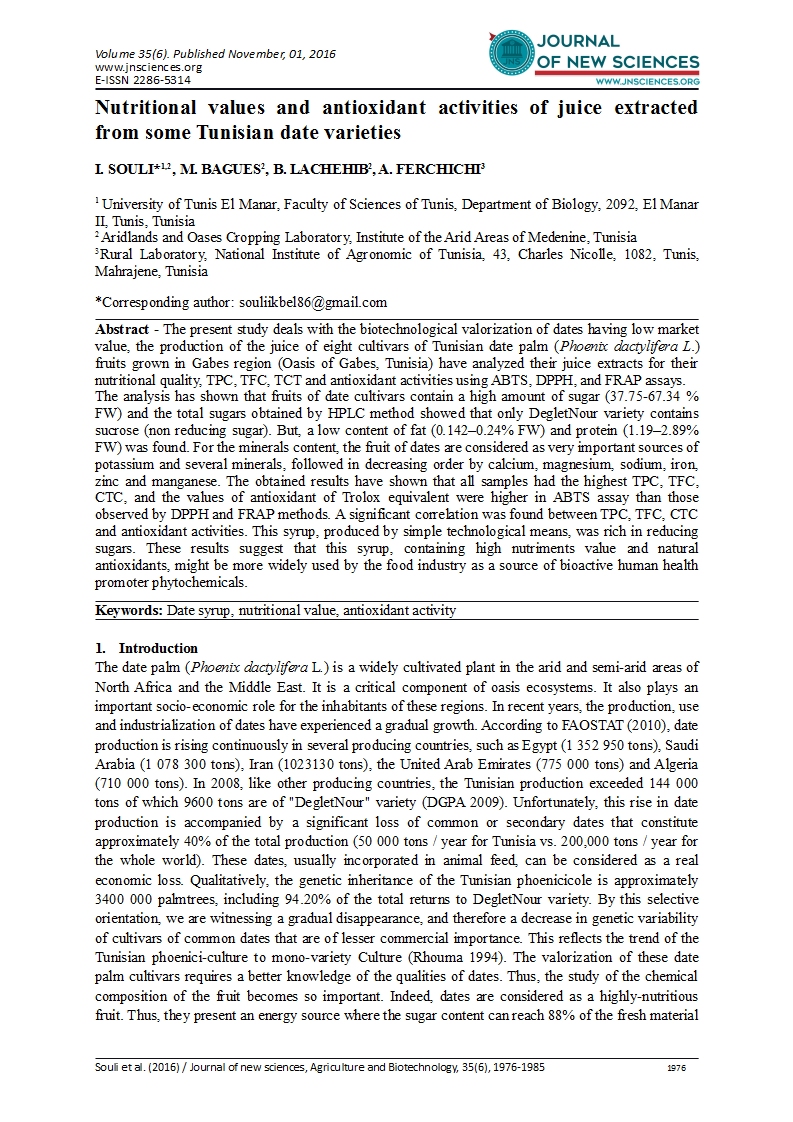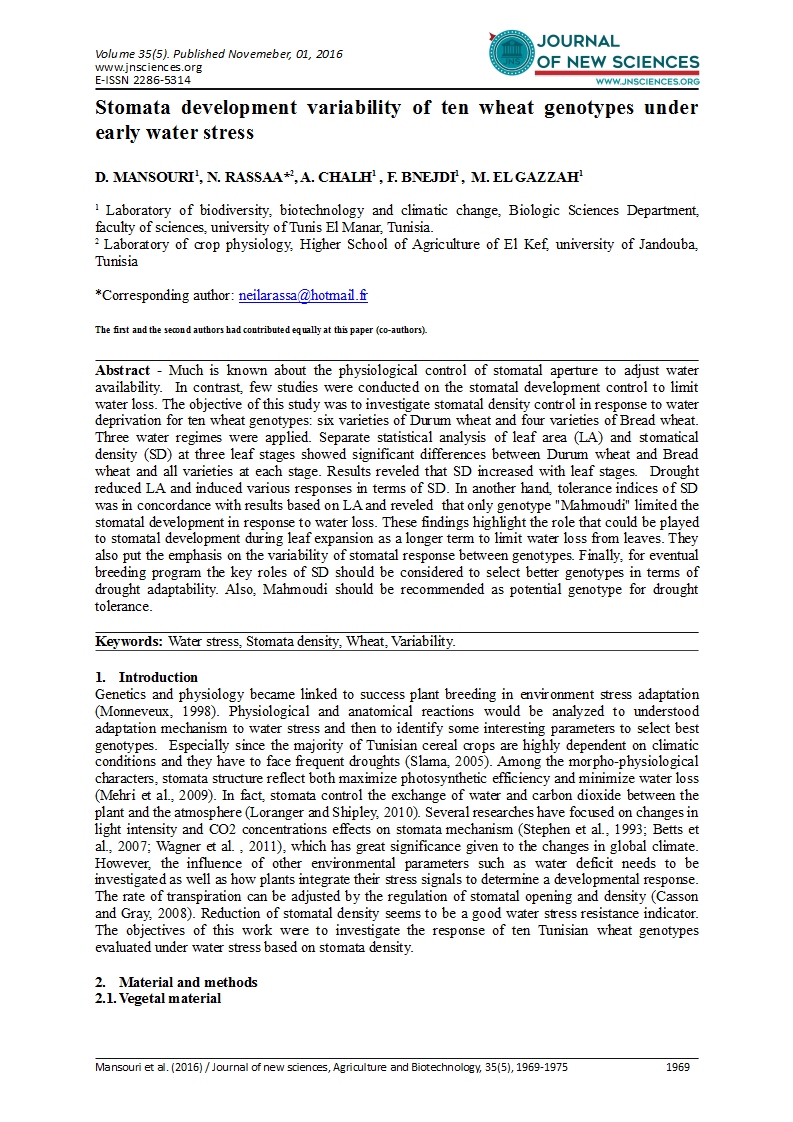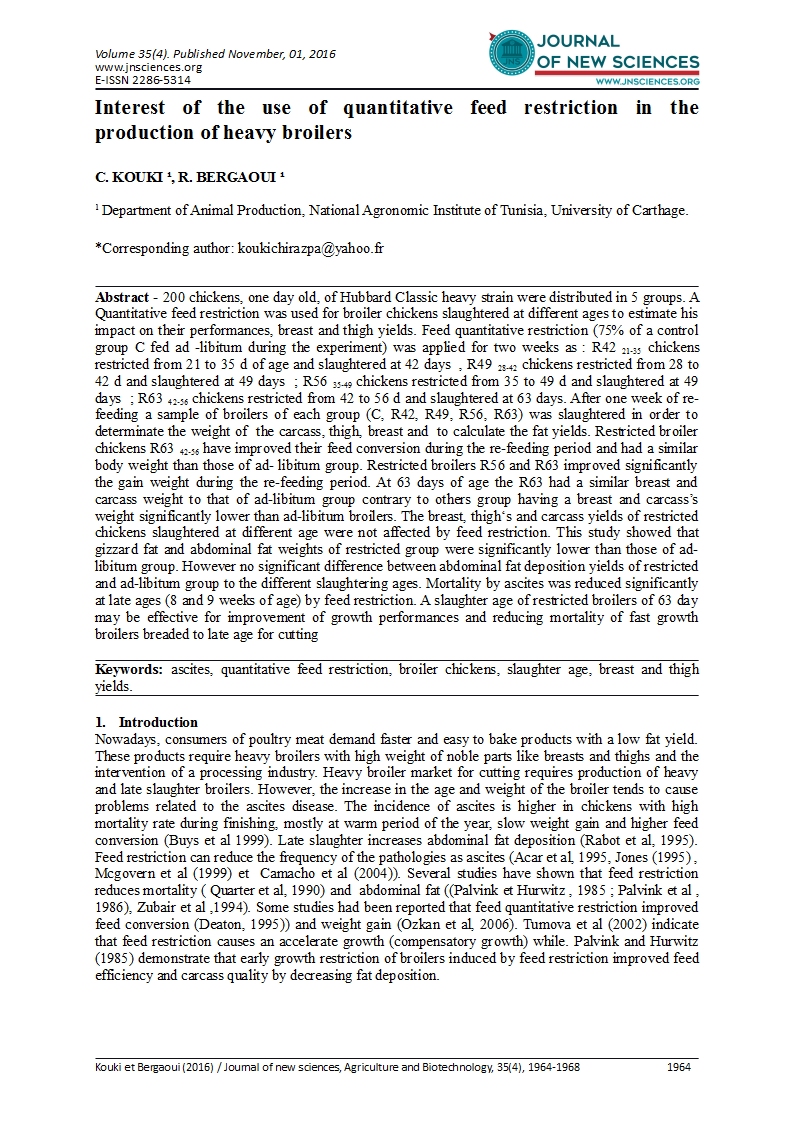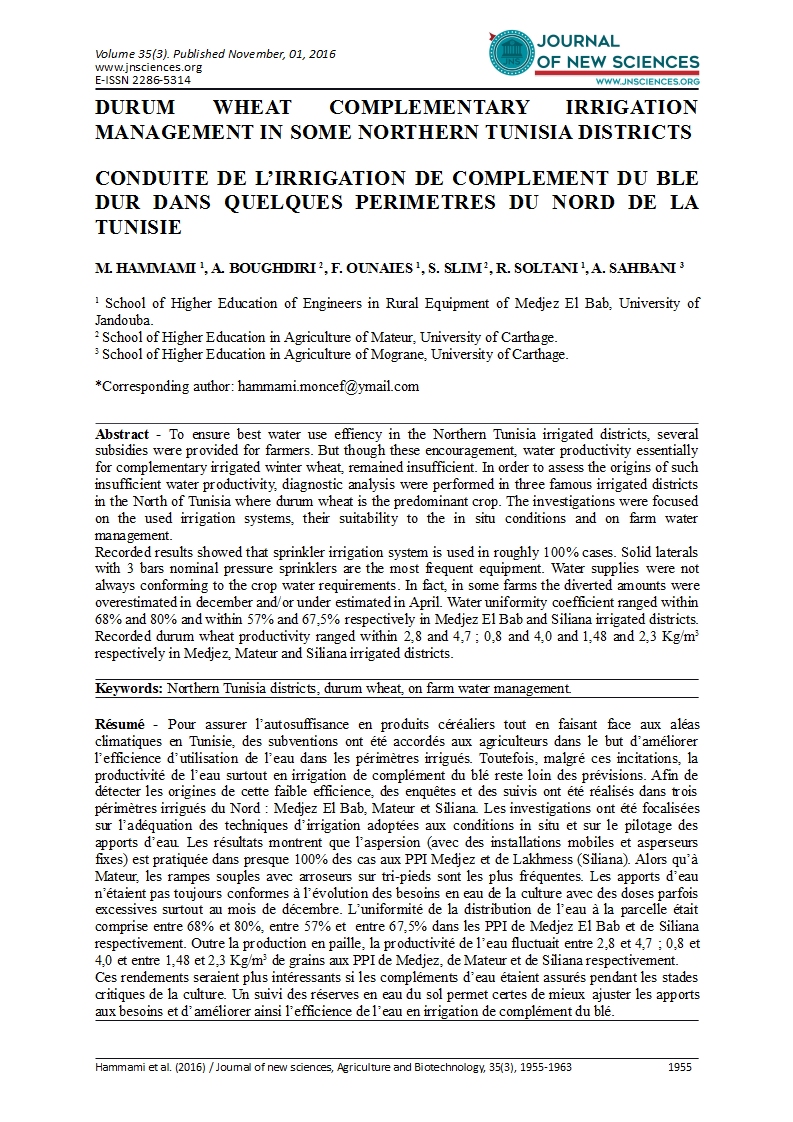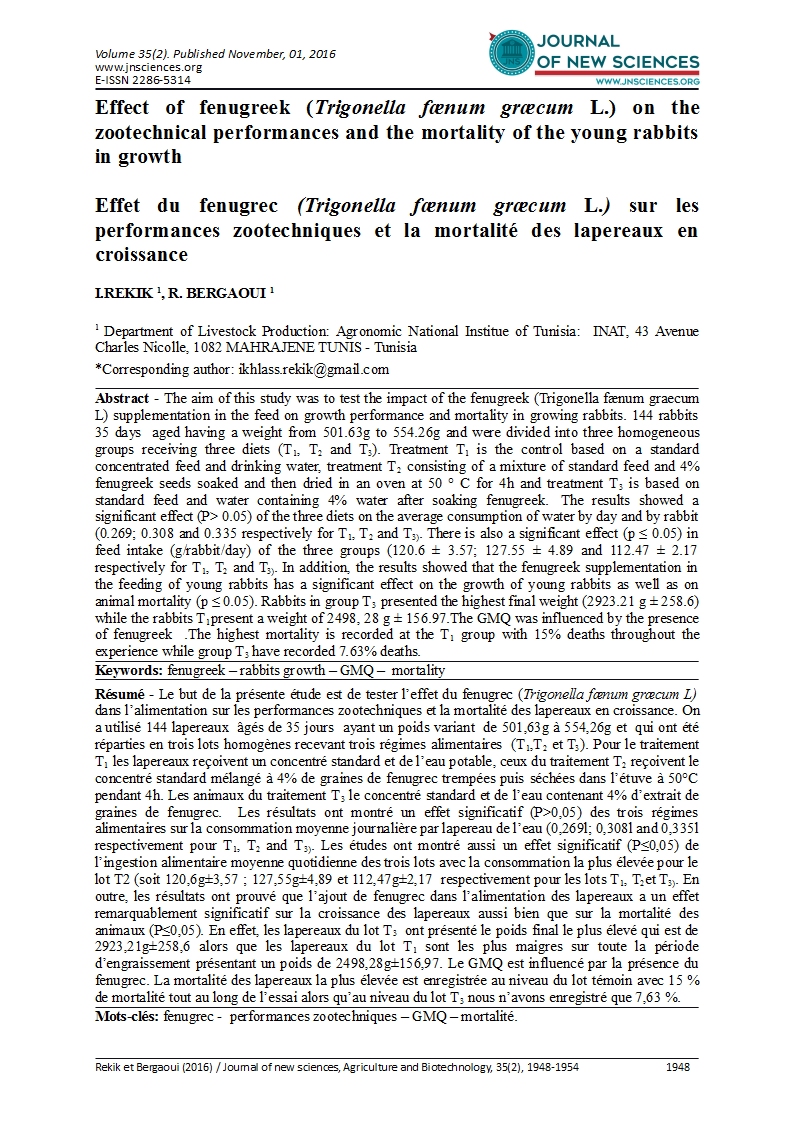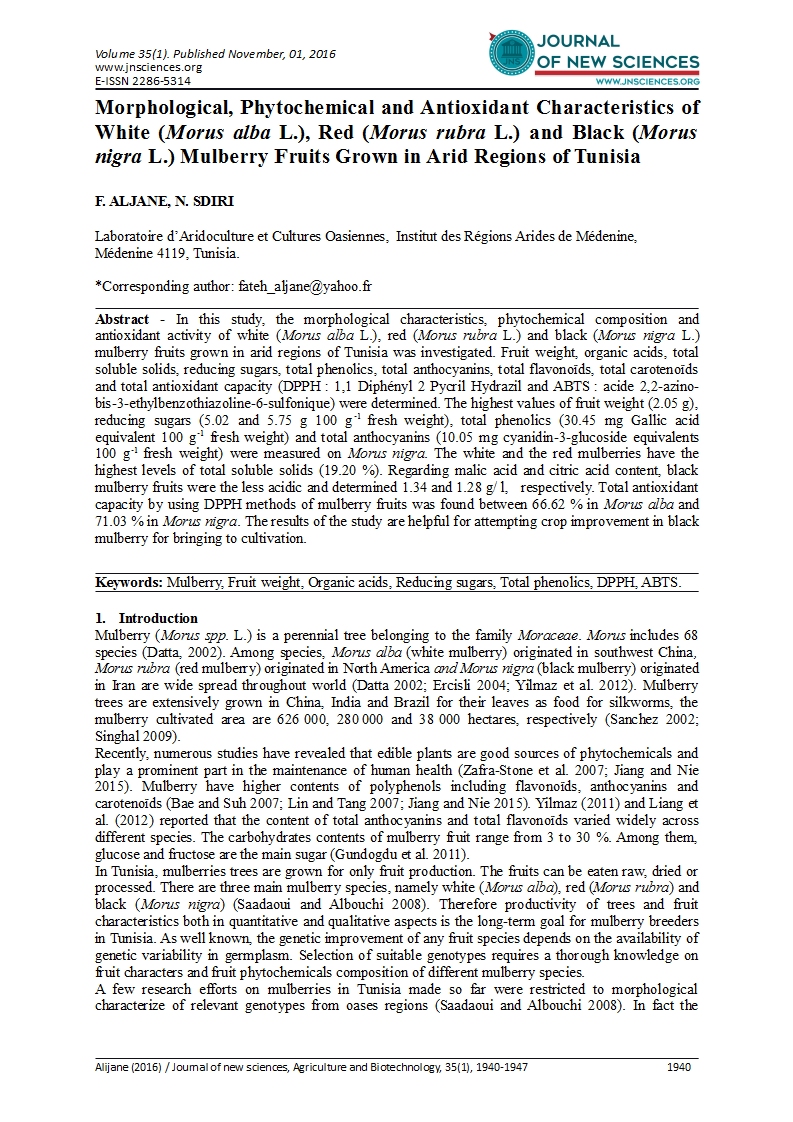- Category: Volume 35
- Hits: 9847
Algerian dairy sector analysis: deficit aspects and perspectives
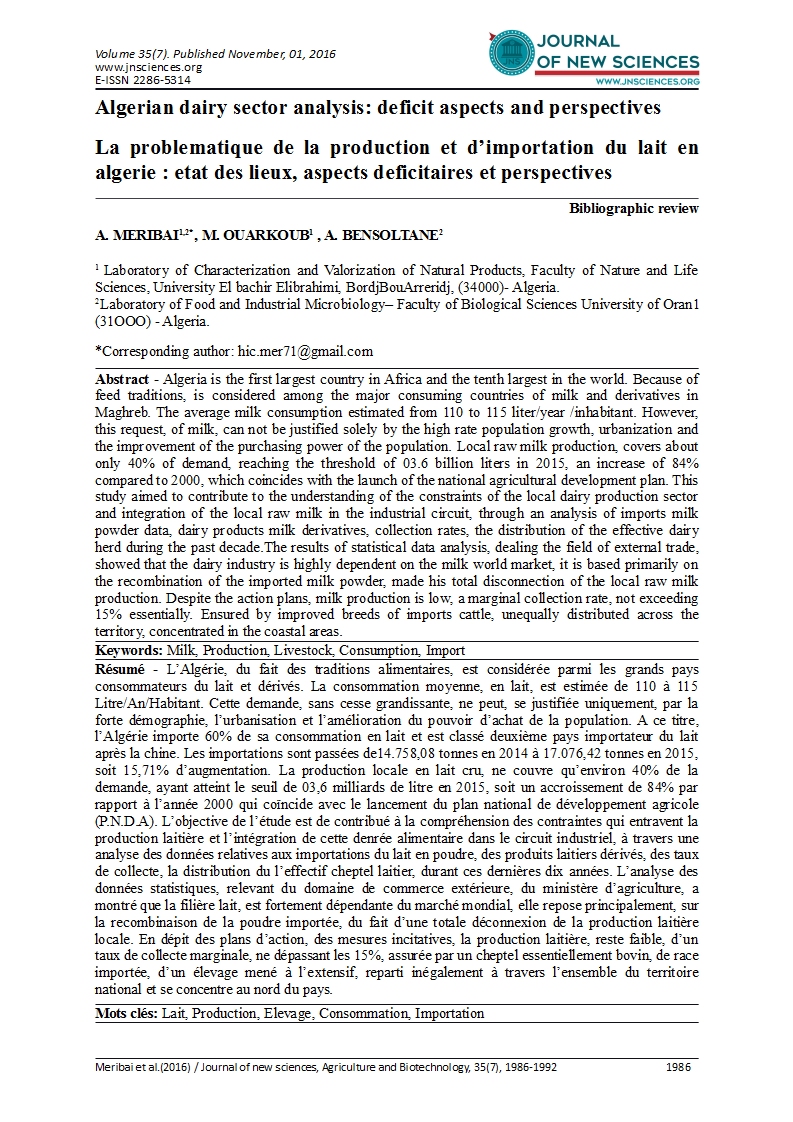
La problematique de la production et d’importation du lait en algerie : etat des lieux, aspects deficitaires et perspectives
Bibliographic review
A. MERIBAI1,2*
M. OUARKOUB1
A. BENSOLTANE2
1 Laboratory of Characterization and Valorization of Natural Products, Faculty of Nature and Life Sciences, University El bachir Elibrahimi, BordjBouArreridj, (34000)- Algeria.
2 Laboratory of Food and Industrial Microbiology– Faculty of Biological Sciences University of Oran1 (31OOO) - Algeria.
Abstract - Algeria is the first largest country in Africa and the tenth largest in the world. Because of feed traditions, is considered among the major consuming countries of milk and derivatives in Maghreb. The average milk consumption estimated from 110 to 115 liter/year /inhabitant. However, this request, of milk, can not be justified solely by the high rate population growth, urbanization and the improvement of the purchasing power of the population. Local raw milk production, covers about only 40% of demand, reaching the threshold of 03.6 billion liters in 2015, an increase of 84% compared to 2000, which coincides with the launch of the national agricultural development plan. This study aimed to contribute to the understanding of the constraints of the local dairy production sector and integration of the local raw milk in the industrial circuit, through an analysis of imports milk powder data, dairy products milk derivatives, collection rates, the distribution of the effective dairy herd during the past decade.The results of statistical data analysis, dealing the field of external trade, showed that the dairy industry is highly dependent on the milk world market, it is based primarily on the recombination of the imported milk powder, made his total disconnection of the local raw milk production. Despite the action plans, milk production is low, a marginal collection rate, not exceeding 15% essentially. Ensured by improved breeds of imports cattle, unequally distributed across the territory, concentrated in the coastal areas.
Keywords: Milk, Production, Livestock, Consumption, Import
Résumé - L’Algérie, du fait des traditions alimentaires, est considérée parmi les grands pays consommateurs du lait et dérivés. La consommation moyenne, en lait, est estimée de 110 à 115 Litre/An/Habitant. Cette demande, sans cesse grandissante, ne peut, se justifiée uniquement, par la forte démographie, l’urbanisation et l’amélioration du pouvoir d’achat de la population. A ce titre, l’Algérie importe 60% de sa consommation en lait et est classé deuxième pays importateur du lait après la chine. Les importations sont passées de14.758,08 tonnes en 2014 à 17.076,42 tonnes en 2015, soit 15,71% d’augmentation. La production locale en lait cru, ne couvre qu’environ 40% de la demande, ayant atteint le seuil de 03,6 milliards de litre en 2015, soit un accroissement de 84% par rapport à l’année 2000 qui coïncide avec le lancement du plan national de développement agricole (P.N.D.A). L’objective de l’étude est de contribué à la compréhension des contraintes qui entravent la production laitière et l’intégration de cette denrée alimentaire dans le circuit industriel, à travers une analyse des données relatives aux importations du lait en poudre, des produits laitiers dérivés, des taux de collecte, la distribution du l’effectif cheptel laitier, durant ces dernières dix années. L’analyse des données statistiques, relevant du domaine de commerce extérieure, du ministère d’agriculture, a montré que la filière lait, est fortement dépendante du marché mondial, elle repose principalement, sur la recombinaison de la poudre importée, du fait d’une totale déconnexion de la production laitière locale. En dépit des plans d’action, des mesures incitatives, la production laitière, reste faible, d’un taux de collecte marginale, ne dépassant les 15%, assurée par un cheptel essentiellement bovin, de race importée, d’un élevage mené à l’extensif, reparti inégalement à travers l’ensemble du territoire national et se concentre au nord du pays.
Mots clés: Lait, Production, Elevage, Consommation, Importation

